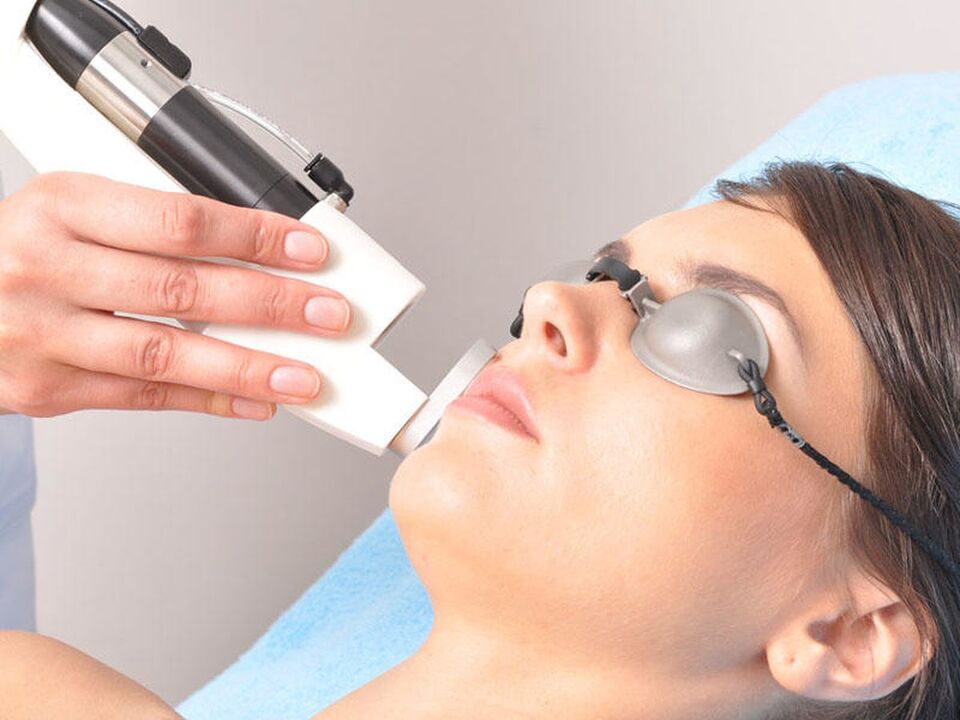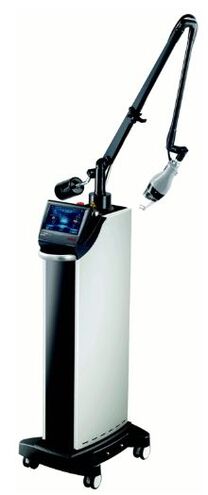
Now the Internet is replete with a wide variety of sentences to rejuvenate us using laser impact.In some cases, it is said that you will come out immediately after the procedure with candy, in others that you will have to hide from people for almost a month after the procedure.So who is telling the truth?
It turns out there are a great many different types of lasers that are used in cosmetology.To begin with, they distinguish between "hot" and "cold" laser.
Hot laser
- Carbon dioxide laser (CO2)- Surgical, infrared, continuous emission.It is used in surgery to cut tissues and removal of neoplasms, as well as with laser grinding of the skin.How CO2 has a laser: quickly and strongly heats the cells that evaporate and absorb the higher, the higher the amount of power applied.A fairly long period of recovery, the procedure is performed under anesthesia.
- Neodymal laser- Infrared, solid -state laser, is used in surgery and for depilation.The wavelength is 1060 nm, continuous emission (emission - the allocation, emitting of elementary particles - ions, positrons, etc. - with a body under the influence of heating, electric or electromagnetic field or flow of fast particles).
- Erby laser- Used to grind the skin.Contactlessly affects the outer layers of the skin and causes instant evaporation of fluid from tissues.The recovery period is long, the procedure is performed under anesthesia.
- Alexandrite- It is used in surgery (wavelength of 750-790 nm) and for depilation, continuous emission.It is still the most effective for removing unwanted vegetation.The procedure is quite painful.
- Argon- Surgical laser (from 458 to 525 Nm), continuous emission.
Cold laser
The so -called cold lasers have low power radiation, does not cause fabric heating, evaporation and coagulation, have exclusively stimulating and analgesic effect.These include two types of therapeutic lasers.
- Hene:The weakly pervalitating laser using a mixture of helium gas and neon of different concentrations under low pressure.Radiation in the visible spectrum (red light) with a wavelength of 632 nm.
- Diode:Impulse, weakly permanent laser radiation in the infrared wavelength of the wavelength of 905 nm.Maximum power 0.5 watts.
According to therapeutic capabilities, these two sources of laser radiation have a great difference in the possibility of penetration into biological tissue.The depth exposure to the Hene Lazer is 0.5-3.5 mm from the surface of the skin, and, accordingly, its effect is superficial and has a thermal and biostimulating effect.
The diode laser, on the contrary, reaches a depth of 5-50 mm, without causing significant heating, passing through shallow layers of the skin, preserving its properties unchanged.At this depth, residual power is significant, and it gives a stimulating effect.In addition, a diode laser, radiating various frequencies, makes it possible to choose various types of therapeutic effects: analgesic, anti -inflammatory, stimulating.
The procedure is painless, has no rehabilitation period.It is often combined with the introduction of various substances, in cosmetology, low -molecular hyaluronic acid is administered with its help - the so -called laser biorevitalization.Since a soft stimulating effect occurs as a result of the effect of a cold laser, you should not wait for instant lifting.The procedure is not disposable, a course impact is required, preferably with a repeat of the course every six months.
What we have as a result:
- shining complexion;
- Improving the tone and elasticity of the skin;
- smoothing small wrinkles;
- Increasing the stability of the skin to stimuli of the external environment.
We get minor lifting only at a young age with the initial manifestations of aging.Conclusion: if we have "extra skin" and strong irregularities of the relief, a miracle is not worth expecting from this methodology.But this is a wonderful alternative to care procedures.
Let's get back to hot lasers.

Actually, we have already found out that rejuvenation and/or grinding of the skin is carried out CO2 or an erbium laser is used.
For two decades, the procedures for rejuvenation using CO2 laser are the gold standard for the treatment of cicatricial changes in the skin, and the laser CO2 rejuvenation takes 3rd place in popularity in the world after hyaluronic acid inhibitions.However, despite the amazing result of the lifting and alignment of the skin relief, few people immediately decide to check the effectiveness of this method due to soreness and a long period of skin restoration.Pioneers of laser grinders could walk with a persistent pink complexion of up to 3 months.
But the method of total laser burning of the skin is already in the past and we are offered methods of fractions.Their difference is that, with fractional effects, burns are point in nature, a sufficient amount of intact skin remains between them, which makes the procedure less traumatic and facilitates the healing process.
Thus, DOT THERAPY (Dermal Optical Thermolysis), DOT (dermal optical thermalsis), DOT-therapy, DOT-ON, Laser Piling Field, laser fractional grinding, Seamless laser lifting, LAFT ways, laser fractional dion, fractional remodeling of the skin, fractional remodeling of the skin, fractional remodelingLaser nano-petriation, drilling (drilling) all these concepts are synonyms and essentially have the same action.The difference and effectiveness depend only on the laser installation.
There is another term that is often used next to the words fractional laser rejuvenation or fractional photothermolysis - this is ablation and not ablation.
Ablation fractional photothermolysisIt represents the process in which the "column" of the tissue occurs and the microscopic "open wound" is formed, surrounded by the zone of thermally damaged cells.After fractional ablation, healing is longer than with the method of not ablation, but the effectiveness of the procedure, its lifting effect, higher.
Not ablation fractional photothermolysis- This is a process during which laser radiation is used that almost does not damage the epidermis, the burn is formed under it, the destroyed fabric does not evaporate, but remains in the skin, there is no “open wound” after such an effect.But the lifting effect is much less, and the number of procedures necessary for really good result.
And finally, under the curtain.Talking about laser rejuvenation, I learned that recently a new ablation fractional ECO2 laser with the use of rays appeared, which allow you to remove the smallest columns of fabrics.The skin intacted by laser stimulates the rapid restoration and healing of tissues.In this case, the risk of side effects is minimal.Rays, acting on the skin, form micro -transformations, stimulating the production of a new collagen and causing active recovery, and accordingly tissue rejuvenation.Over the next 3-6 months, the restructuring of collagen continues in the skin.The new ablation fractional ECO2 laser more efficiently eliminates wrinkles and rejuvenate the skin compared to the method in which the rehabilitation fractional laser is used, and the rehabilitation period is much less compared to the methods in which the traditional non -fractional CO2 and erbium lasers are used.
Result:
- pronounced skin lifting, and which is very important, including the reduction and strengthening of the skin of the eyelids;>
- smoothing effect;
- improvement of texture and skin color;
- long -term reduction of pores;
- Reducing the severity of stretch marks and scars after acne.
So, with the right choice of the apparatus and a doctor who has been working with laser installations for a long time and will choose the “correct” parameters to get a really amazing result, you can transfer a visit to a plastic surgeon for a later time.






















